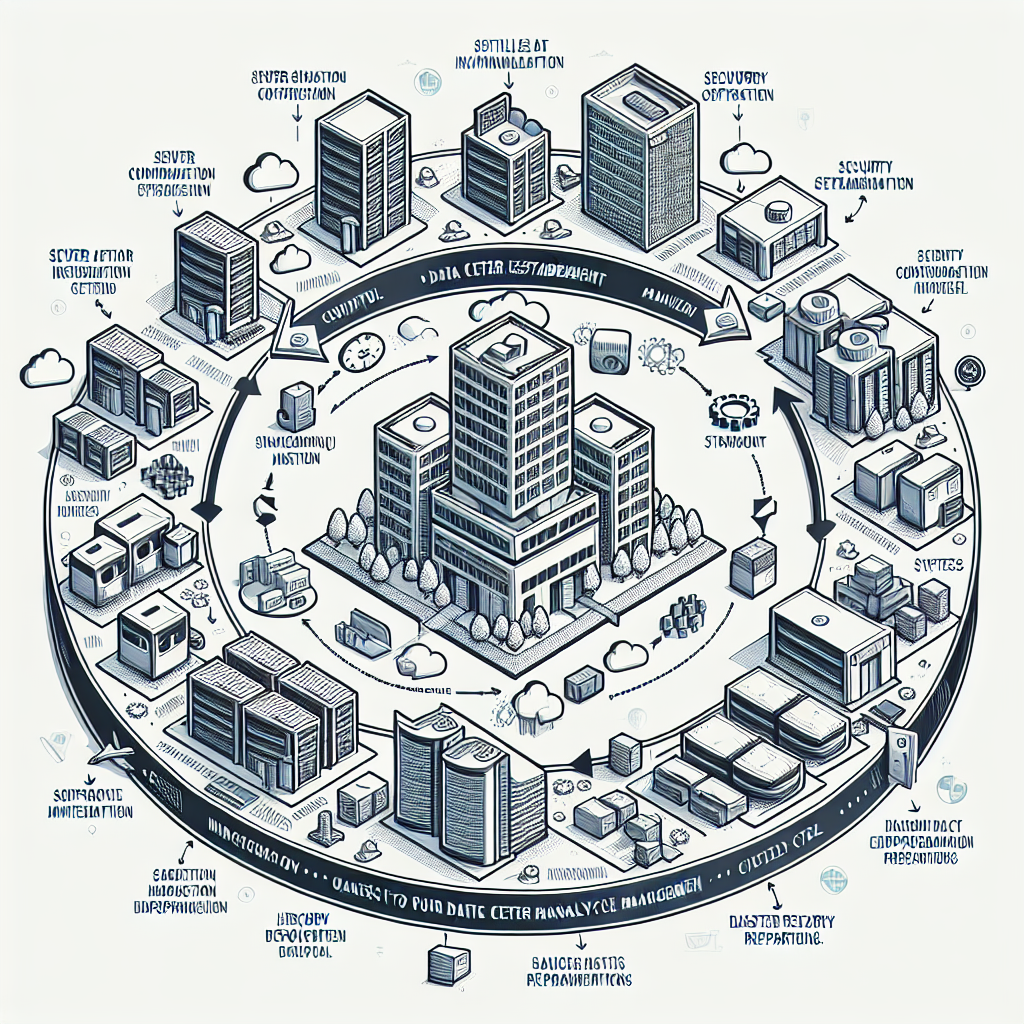Data centers are critical components of any organization’s IT infrastructure. They house servers, storage devices, networking equipment, and other hardware that support the organization’s digital operations. As such, it is essential for businesses to have a well-defined data center lifecycle management plan in place to ensure the efficient operation and maintenance of their data center infrastructure.
Implementing a successful data center lifecycle management plan involves several key steps that organizations should follow to ensure the smooth functioning of their data centers. Here are some key steps to consider when developing and implementing a data center lifecycle management plan:
1. Define Objectives and Goals: The first step in implementing a successful data center lifecycle management plan is to define the objectives and goals of the plan. This includes determining what you want to achieve with the plan, such as improving data center efficiency, reducing operational costs, or enhancing data center security.
2. Conduct a Data Center Audit: Before implementing a data center lifecycle management plan, it is essential to conduct a thorough audit of the existing data center infrastructure. This includes assessing the current hardware and software assets, identifying potential risks and vulnerabilities, and documenting the overall condition of the data center.
3. Develop a Data Center Lifecycle Management Strategy: Once you have defined your objectives and goals and conducted a data center audit, the next step is to develop a comprehensive data center lifecycle management strategy. This strategy should outline the key tasks and activities that need to be performed to achieve the objectives of the plan, such as hardware maintenance schedules, software updates, and data backup procedures.
4. Implement Monitoring and Reporting Tools: To effectively manage the data center lifecycle, organizations should implement monitoring and reporting tools that provide real-time visibility into the performance and health of the data center infrastructure. These tools can help identify potential issues before they escalate into major problems and enable organizations to make informed decisions about resource allocation and capacity planning.
5. Establish Change Management Processes: Change management is a critical component of data center lifecycle management, as it ensures that any changes to the data center infrastructure are properly planned, tested, and implemented. Organizations should establish formal change management processes that define the steps required to make changes to the data center environment, including documenting change requests, obtaining approval from stakeholders, and conducting post-change reviews.
6. Regularly Review and Update the Plan: Data center infrastructure is constantly evolving, with new technologies and best practices emerging on a regular basis. To ensure the continued success of a data center lifecycle management plan, organizations should regularly review and update the plan to incorporate new developments and address any gaps or deficiencies in the existing plan.
By following these key steps, organizations can effectively implement a successful data center lifecycle management plan that ensures the efficient operation and maintenance of their data center infrastructure. With proper planning, monitoring, and regular updates, organizations can optimize their data center performance and achieve their business objectives.


Leave a Reply